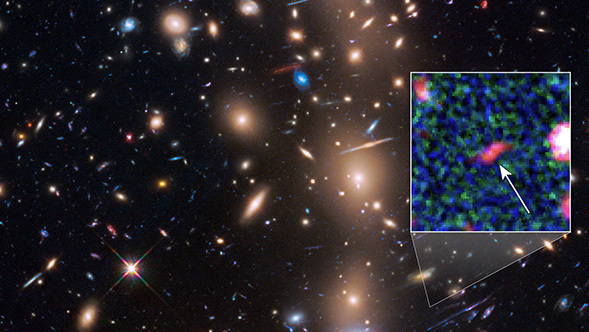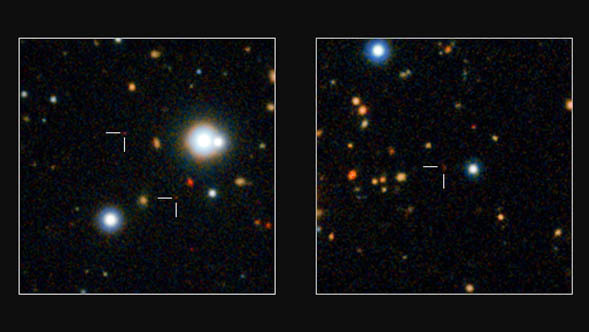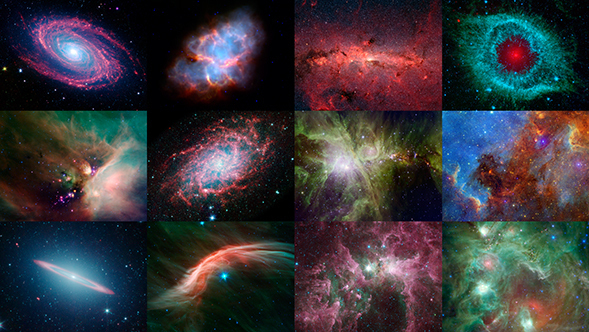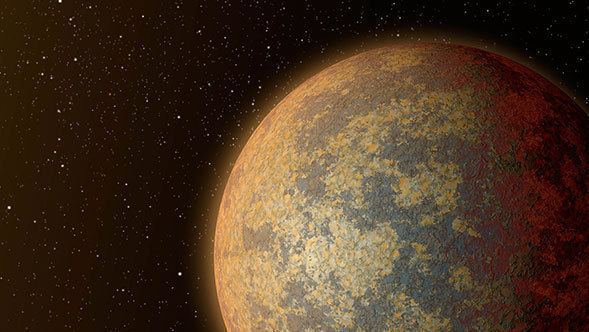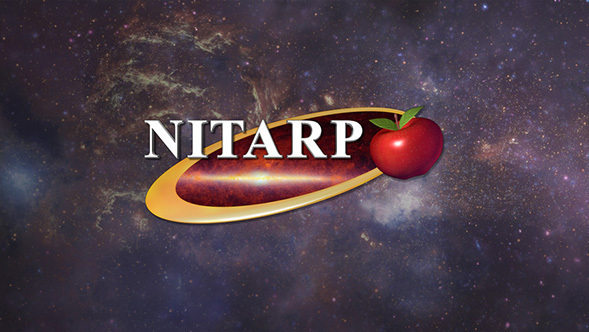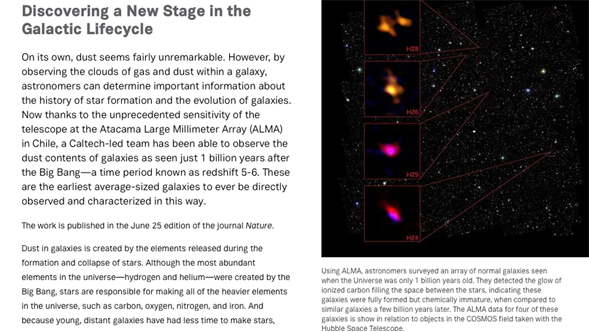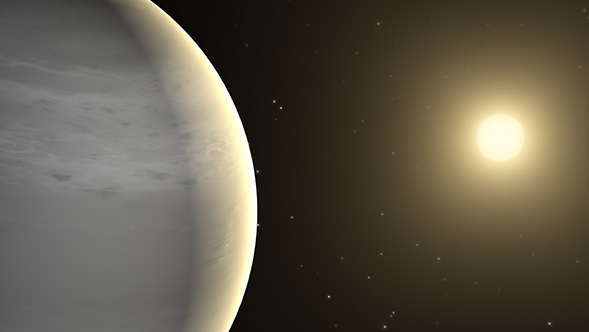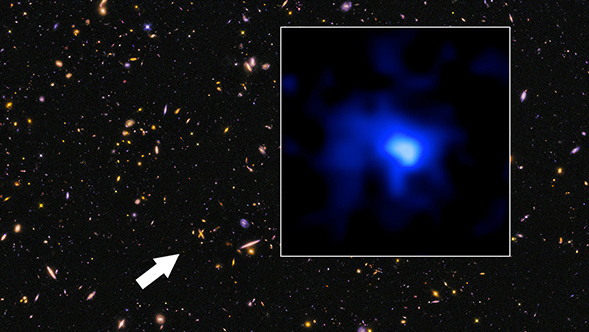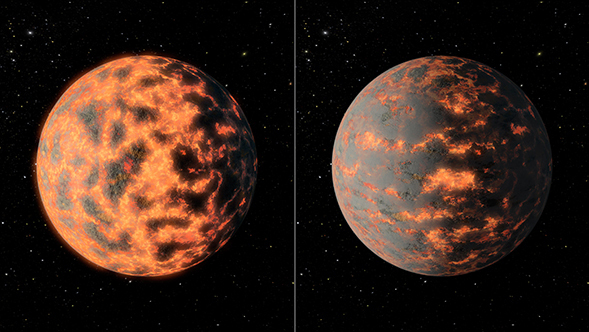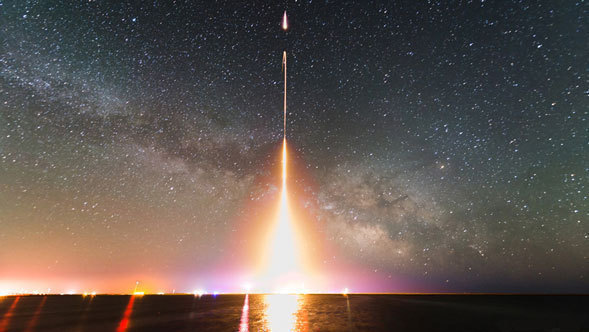Displaying news 121 - 150 of 587 in total
A survey of 10 hot, Jupiter-sized exoplanets conducted with NASA’s Hubble and Spitzer space telescopes has led a team to solve a long-standing mystery -- why some of these worlds seem to have less water than expected.
Astronomers have discovered what appears to be a tiny star with a giant, cloudy storm, using data from NASA's Spitzer and Kepler space telescopes. The dark storm is akin to Jupiter's Great Red Spot: a persistent, raging storm larger than Earth.
On Nov. 26, NASA's Spitzer Space Telescope entered into a standby mode while executing regular calibration observations. This mode is triggered by the spacecraft's fault protection system when an anomaly occurs. It puts Spitzer in a standby configuration until further instructions from the ground are received.
Astronomers harnessing the combined power of NASA’s Hubble and Spitzer space telescopes have found the faintest object ever seen in the early universe. It existed about 400 million years after the big bang, 13.8 billion years ago.
A star called KIC 8462852 has been in the news recently for unexplained and bizarre behavior. New clues emerge in the mystery of a star with odd light patterns.
ESO’s VISTA survey telescope has spied a horde of previously hidden massive galaxies that existed when the Universe was in its infancy. By discovering and studying more of these galaxies than ever before, astronomers have, for the first time, found out exactly when such monster galaxies first appeared.
Astronomers have discovered a giant gathering of galaxies in a very remote part of the universe, thanks to NASA's Spitzer Space Telescope and Wide-field Infrared Survey Explorer (WISE). The galaxy cluster, located 8.5 billion light-years away, is the most massive structure yet found at such great distances.
Astronomers have discovered a rare beast of a galaxy cluster whose heart is bursting with new stars. The unexpected find, made with the help of NASA's Spitzer and Hubble space telescopes, suggests that behemoth galaxies at the cores of these massive clusters can grow significantly by feeding off gas stolen from another galaxy
A team of Caltech researchers that has spent years searching for the earliest objects in the universe now reports the detection of what may be the most distant galaxy ever found.
Relive the highlights of NASA's Spitzer Space Telescope mission with a new digital calendar.
Using NASA's Spitzer Space Telescope, astronomers have confirmed the discovery of the nearest rocky planet outside our solar system, larger than Earth and a potential gold mine of science data.
NASA's New Horizons will have the support of other spacecraft during its historic Pluto flyby, with observations from their outposts across the solar system.
A new image containing data from NASA's Spitzer and Chandra space telescopes shows a cluster of young stars expected to burn for billions of years.
A decade after graduating its first class, the NASA/IPAC Teacher Archive Research Program (NITARP)—a project that brings an authentic astronomy research experience into middle, high school and community college classrooms—has had resounding success.
An older planet may have reclaimed its youthful glow, according to new evidence from NASA's Spitzer Space Telescope.
Thanks to the unprecedented sensitivity of the telescope at the Atacama Large Millimeter Array (ALMA) in Chile, a Caltech-led team has been able to observe the dust contents of galaxies as seen just 1 billion years after the Big Bang—a time period known as redshift 5-6. These are the earliest average-sized galaxies to ever be directly observed and characterized in this way, thanks in part to observations obtained by NASA's Spitzer Space Telescope.
The wacky world of exoplanets continues to surprise astronomers. They wouldn't float like balloons or give you the chance to talk in high, squeaky voices, but planets with helium skies may constitute an exotic planetary class in our Milky Way galaxy.
An international team of astronomers, led by Yale University and the University of California scientists, pushed back the cosmic frontier of galaxy exploration to a time when the universe was only 5 percent of its present age of 13.8 billion years. The team discovered an exceptionally luminous galaxy more than 13 billion years in the past and determined its exact distance from Earth using the combined data from NASA’s Hubble and Spitzer space telescopes, and the Keck I 10-meter telescope at the W. M. Keck Observatory in Hawaii. These observations confirmed it to be the most distant galaxy currently measured, setting a new record. The galaxy existed so long ago, it appears to be only about 100 million years old.
Using NASA’s Spitzer Space Telescope, the researchers observed thermal emissions coming from the planet, called 55 Cancri e – orbiting a sun-like star located 40 light years away in the Cancer constellation – and for the first time found rapidly changing conditions, with temperatures on the hot ‘day’ side of the planet swinging between 1000 and 2700 degrees Celsius.
NASA's Spitzer Space Telescope has teamed up with a telescope on the ground to find a remote gas planet about 13,000 light-years away, making it one of the most distant planets known.
Our Sun missed the stellar "baby boom" that erupted in our young Milky Way galaxy 10 billion years ago. During that time the Milky Way was churning out stars 30 times faster than it does today. Our galaxy was ablaze with a firestorm of star birth as its rich reservoir of hydrogen gas compressed under gravity, creating myriad stars. But our Sun was not one of them. It was a late "boomer," arising 5 billion years later, when star birth had plunged to a trickle.
As NASA missions explore our solar system and search for new worlds, they are finding water in surprising places. Water is but one piece of our search for habitable planets and life beyond Earth, yet it links many seemingly unrelated worlds in surprising ways.
A sudden eruption around an exceptionally young star surprises astronomers. Using data from orbiting observatories, including NASA's Spitzer Space Telescope, and from ground-based facilities, an international team of astronomers has discovered an outburst from a star thought to be in the earliest phase of its development.
"Hmm, what's that?" Simply by asking the question, volunteers have led researchers to illuminate a little-known stage of massive star formation.
How many high school teachers and kids can say that they have presented their astronomy reach alongside professional astronomers at an international conference? These folks can.
Sometimes a horse of a different color hardly seems to be a horse at all, as, for example, in this newly released image from NASA's Spitzer Space Telescope. The famous Horsehead nebula makes a ghostly appearance on the far right side of the image, but is almost unrecognizable in this infrared view.
One galaxy devoured remnants of another galaxy, quenching the formation of new stars.
Researchers studying what appears to be a beefed-up version of our solar system have discovered that it is encased in a halo of fine dust. The findings are based on infrared data from NASA's Spitzer Space Telescope and the European Space Agency's Herschel Space Observatory, in which NASA is a partner.
A NASA sounding rocket experiment has detected a surprising surplus of infrared light in the dark space between galaxies, a diffuse cosmic glow as bright as all known galaxies combined. The glow is thought to be from orphaned stars flung out of galaxies.
It might look like a spoked wheel or even a "Chakram" weapon wielded by warriors like "Xena," from the fictional TV show, but this ringed galaxy is actually a vast place of stellar life. A newly released image from NASA's Spitzer Space Telescope shows the galaxy NGC 1291.
Displaying news 121 - 150 of 587 in total



